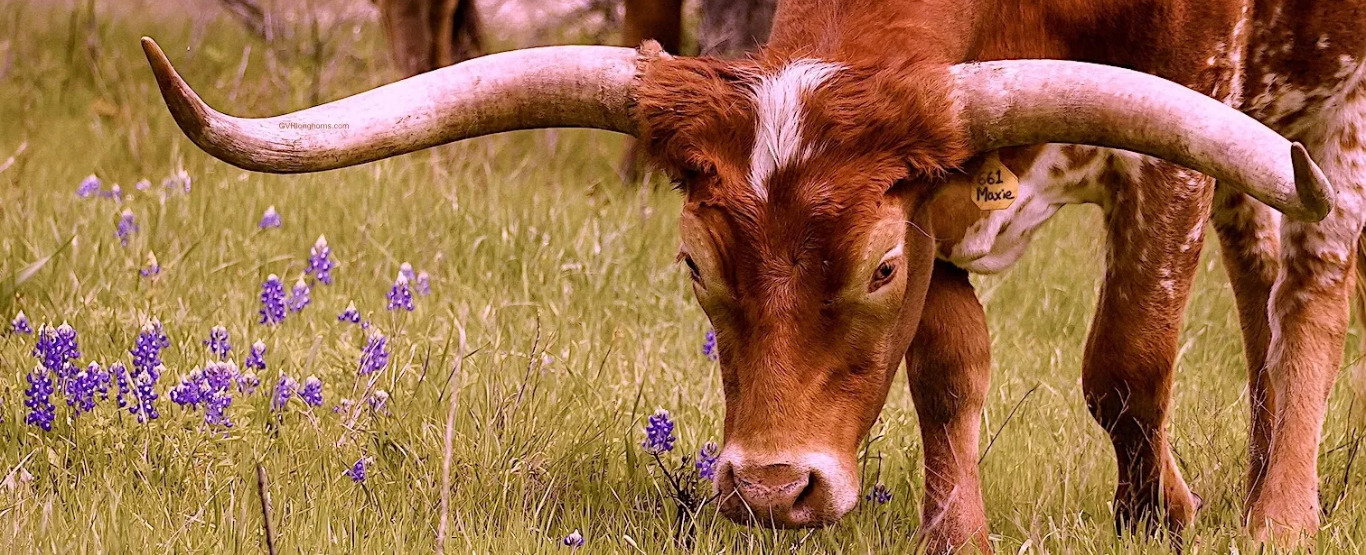
You would think that immunity to disease is a good thing, right?
And if you have read some of my previous blog posts you will know that Texas Longhorn cattle have a strong immunity to disease.
( previous posts :
10 reasons to want Texas longhorn cattle
So why is it then, that around 100 years ago, the Texas longhorn breed almost became extinct?
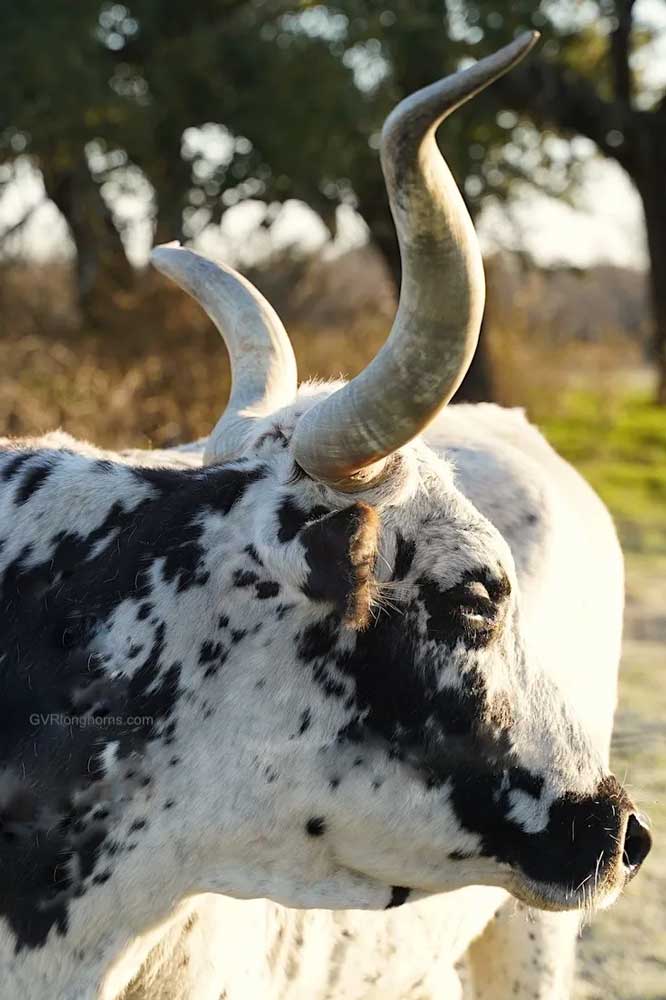
Well, believe it or not, a virus was partially to blame.
But,
(and it is a big but!)
the outcome of the virus did not play out quite as you would expect.
In fact, Texas longhorn cattle did not get sick.
To understand this twist of fate, here is a brief outline of the intriguing events that molded history and affected the majestic breed of Texas longhorn cattle almost to the point of extinction.
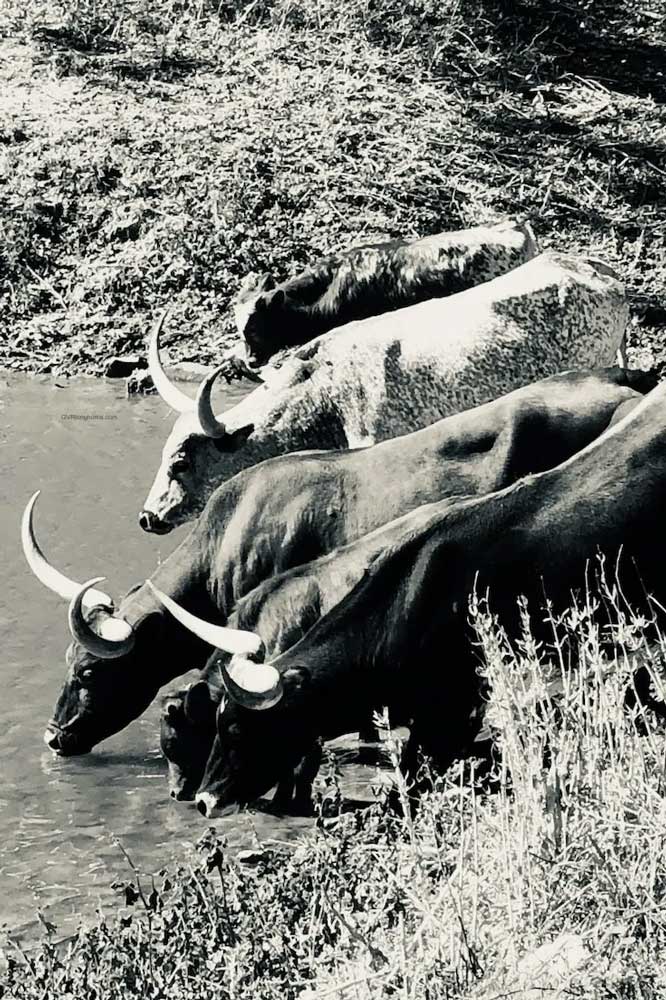
- Let’s start in 1836, when Texas became independent from Mexico. Feral cattle could be found roaming the lands in Texas just like deer and they were in abundance. In fact longhorn cattle were known as wild Texas cattle, long before they were referred to as Texas longhorn cattle.
- These wild cattle were not unlike other wild species of game in that only the strong survived. This process of natural selection strengthen Texas longhorn cattle and enabled them to be more tolerant of their surroundings.
- So much so that by the end of the Civil war era, around 1860’s wild cattle in Texas roamed the countryside in abundance. Some place figures around 6 million.
- In the years following the Civil War, Texas cowboys secured their role in history as they rounded up these cattle, initially for their hides and tallow and later as a beef commodity and trailed them to other parts of the country. Many famous trails were created. One of which was created by Charles Goodnight and Oliver Loving, who set out in 1866 along what later became known as The Goodnight-Loving trail. They drove cattle north along the Pecos river following a longer but safer route to Denver. The Chisholm Trail was another route north to the rail heads in Abilene Kansas, where cattle were then shipped further east.

Here’s the part that is mind blowing……… many of you are mostly likely aware that
millions of wild cattle
are believed to have been driven north through Missouri, Kansas, Arkansas and Indian Territory, on the various cattle trails.
So the curious question is ……
What happened to these huge herds? And, why would Texas longhorn cattle herds shrivel in numbers to face near extinction?
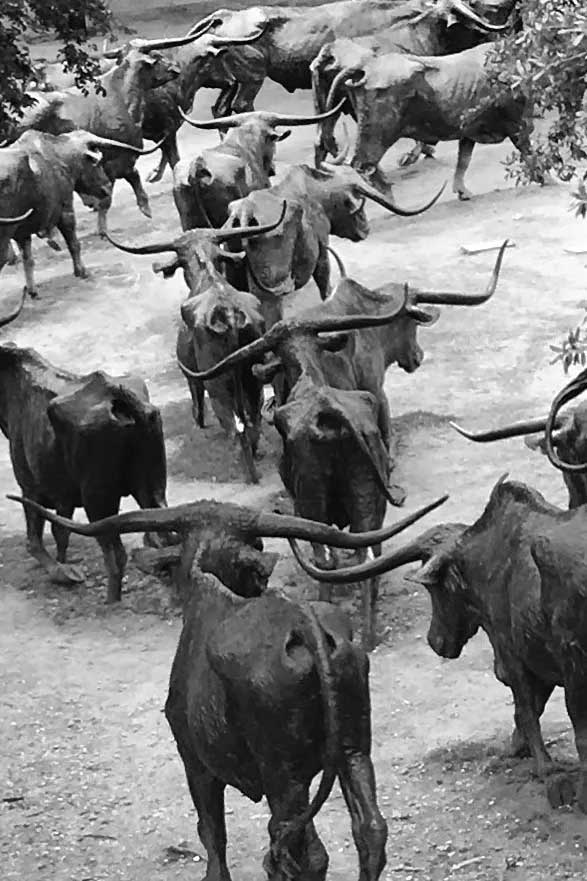
Texas longhorn cattle are said to have gained stamina along the trails. The irony is that it’s the other European cattle breeds already in the country, that died as a result of being exposed to Texas longhorn cattle.
- It all has to do with a Tick. It turns out that Texas longhorn cattle are immune to disease spread by cattle fever ticks or if you prefer their scientific name – Rhipicephalus (formerly Boophilus). Along the cattle trails, these ticks would catch a ride on Texas Longhorn cattle, jump off along the way and land on other cattle in proximity to the trials, and you guessed it, kill them!
- Outbreaks of Texas Fever led many midwestern states to enforce quarantine restrictions on Texas cattle herds. Kansas completely banned them in 1885.
Does this sound familiar? Social distancing, shelter in place…………..
Unfortunately, reverting to “the way things were” was not an option.
By this time, too much had changed:
- European cattle breeds were becoming popular as a preference for beef. Although railway lines were eventually built all the way into Texas so that longhorn cattle could be shipped to market even Texas ranchers transitioned to the more beefy European breeds.
- Barbed wire fencing was patented in 1874 ending an era for wild cattle.

Ranchers did not completely discard Texas longhorn cattle but it’s how they used them that would inevitably lead to the breed’s demise.
In order to take advantage of the breed’s hardy characteristics to endure a harsh environment, ranchers interbred their less resistant beefy cattle with Texas longhorns. Charles Goodnight was one of the forerunners in this field. He cross bred Herefords with Texas longhorns in a successful attempt to enable his herds to withstand the elements in the Texas panhandle. By the early 1900’s, Texas longhorn cattle, in their pure form were few and far between.
CONCLUSION
It took deliberate actions of a relatively small group to prevent Texas longhorn cattle from disappearing from existence, the details of which have been noted in a previous post (read it here). Failing intervention, a breed of cattle that was not only prolific but more suited than most to withstand harsh conditions would have been completely eliminated from our planet. Interestingly, some believe that the fate of the Texas longhorn cattle breed is once again in the balance, (a discussion for another time.)
The facts remain that we are currently living in troubled times. All the same, life will resume a “new normal”.
There is no doubt, however, that, irrespective of the circumstances, our actions have consequences and that we as individuals should not underestimate the difference we make, if not for ourselves, for our children.
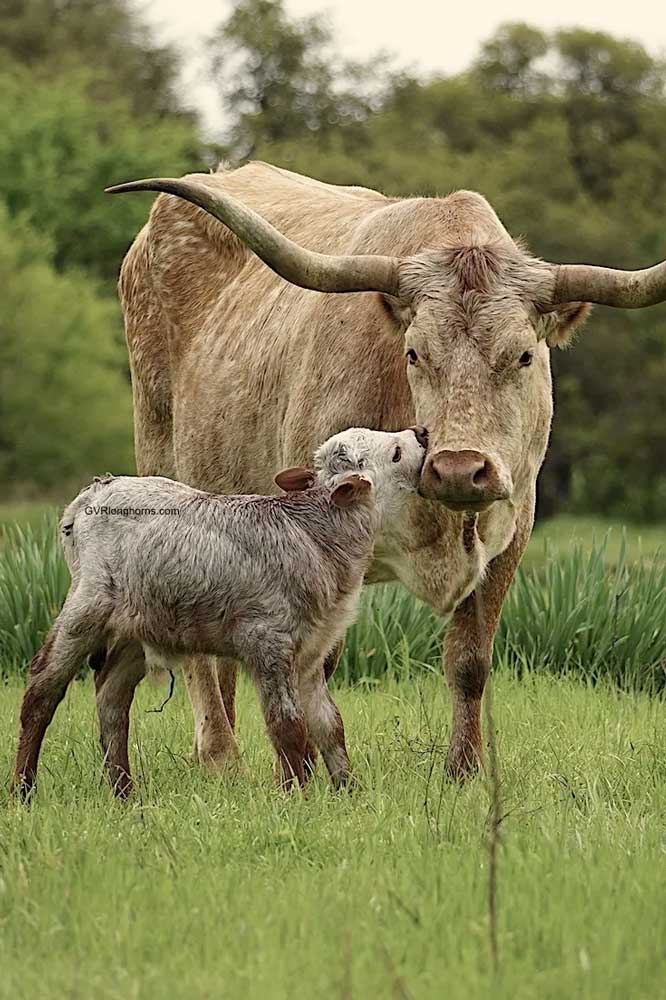
For your own bundle of joy visit our SALEBARN
References:
https://entomology.tamu.edu/2017/02/02/texas-cattle-fever-ticks-are-back-with-a-vengeance/
Dobie, J. Frank, The Longhorns, 1941, Little, Brown and Company, Boston.
Worcester, Don, The Texas Longhorn, 1987, Texas A&M University Press, College Station.
Disclaimer: All material noted above is based on our hands- on experience as ranchers, as well as our observations of our own cattle over the years. We have done and continue to do extensive research in order to maintain our herd‘s optimum health. However, all opinions and statements made on our website are meant as guidelines only. We are not qualified statisticians/ veterinarians and urge you to consult a specialist with your concerns. Content of this blog belongs to GVR Longhorns LLC and may not be copied in any form. ©GVRlonghorns.com All rights reserved.

